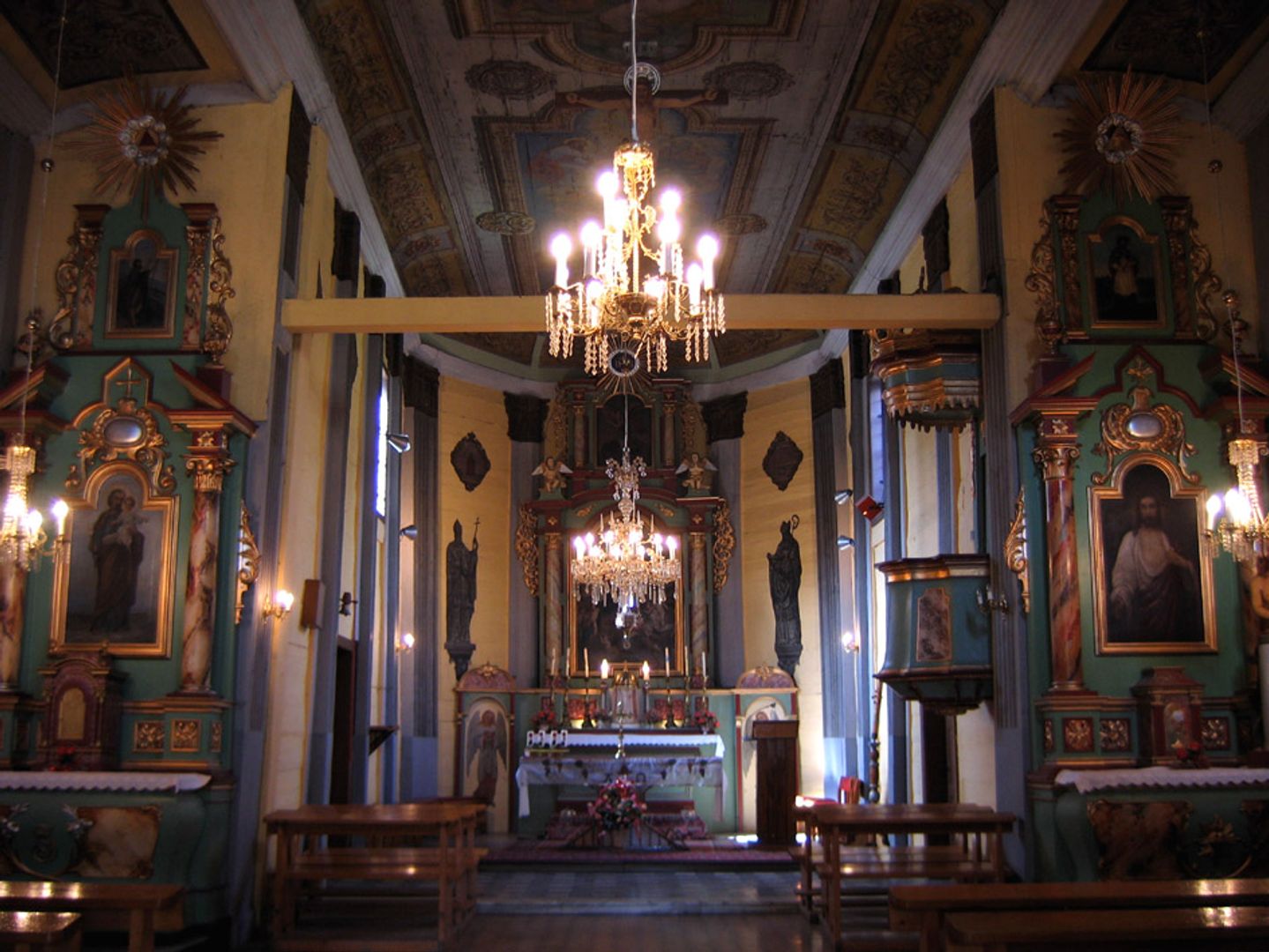Oil
6.16

Overview
Ropa is a village in the Lesser Poland Voivodeship, in Gorlice County, founded in the 14th century under German law by Casimir the Great. An important role in the history of the village was played by the Gładysz family, who acquired it in 1393. Local legends tell of Seweryn Boner, a gold prospector who accidentally discovered oil. His mine was flooded, leading to the popular saying: “He who sought gold in Ropa was washed with tar.” In the 19th century, after the industrial use of oil was discovered, local oil infrastructure developed, though the refinery eventually failed due to flooding.
The village is known for its beautiful monuments, including the auxiliary Church of St. Michael the Archangel, built in the Baroque style in 1761. The church features a wooden structure with Lemko-style finials and is decorated with 19th-century polychrome paintings. Ropa is also home to a manor complex with a Baroque-Classical manor house from 1803, surrounded by a park—currently under renovation—and a brick wall with a bell tower.
Culturally, the village is significant with two religious communities: the Seventh-day Adventist Reformed Church and the Roman Catholic parish of St. Michael the Archangel. A tourist trail runs through the area around Ropa, crossing Miejska Góra (Town Mountain), making it attractive to hiking enthusiasts. Daily life in the village is enriched by its distinct neighborhoods, such as Bogaczówka and Kawówka, highlighting its geographical diversity. Additional points of interest include a World War I military cemetery and a lamus (storehouse) from the reconstruction of a defensive manor, both testifying to Ropa’s rich history. The village captivates both history enthusiasts and tourists seeking beautiful landscapes and cultural treasures.
Location
2025 Wizytor | All Rights Reserved